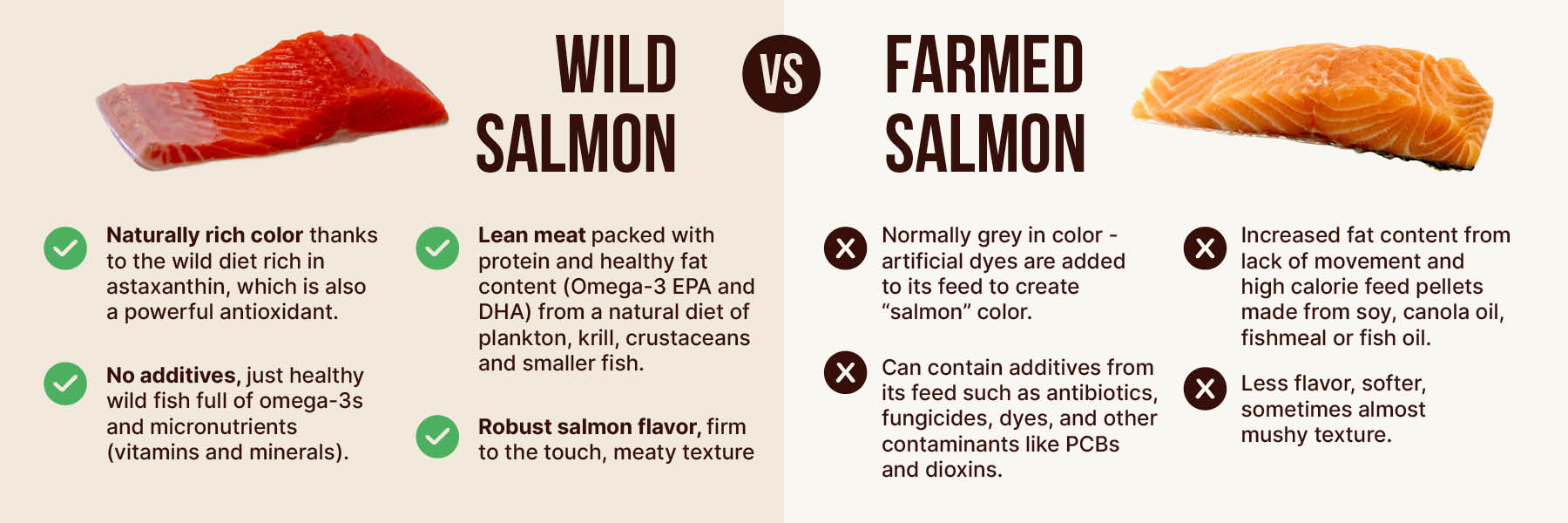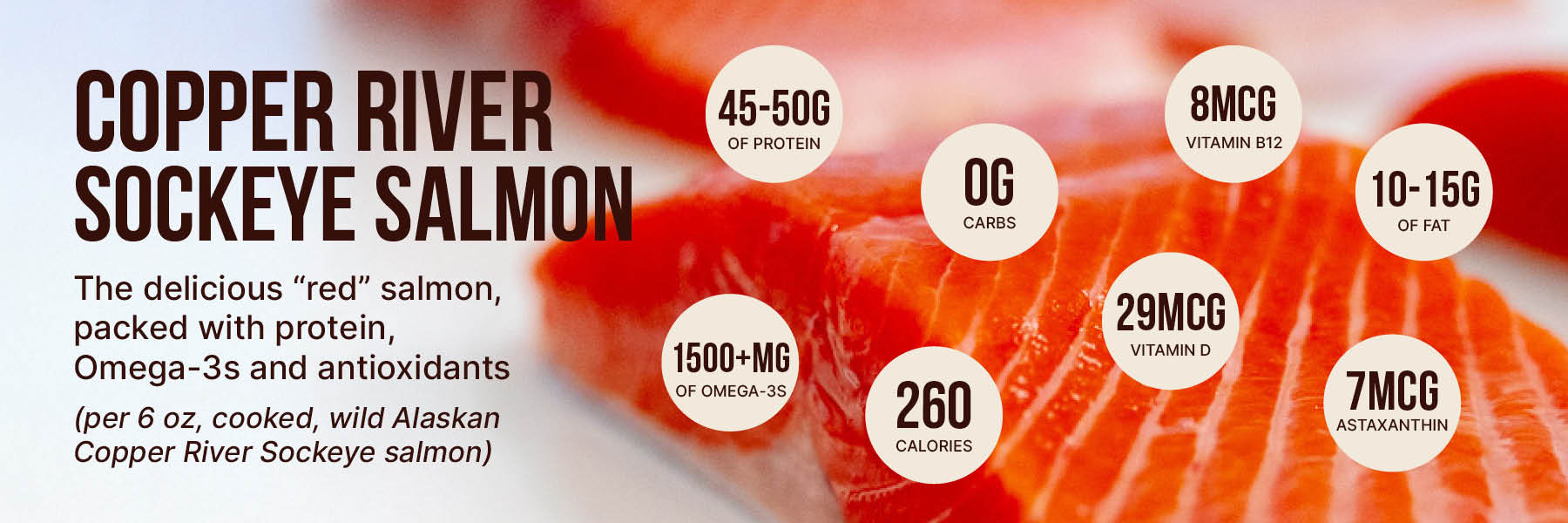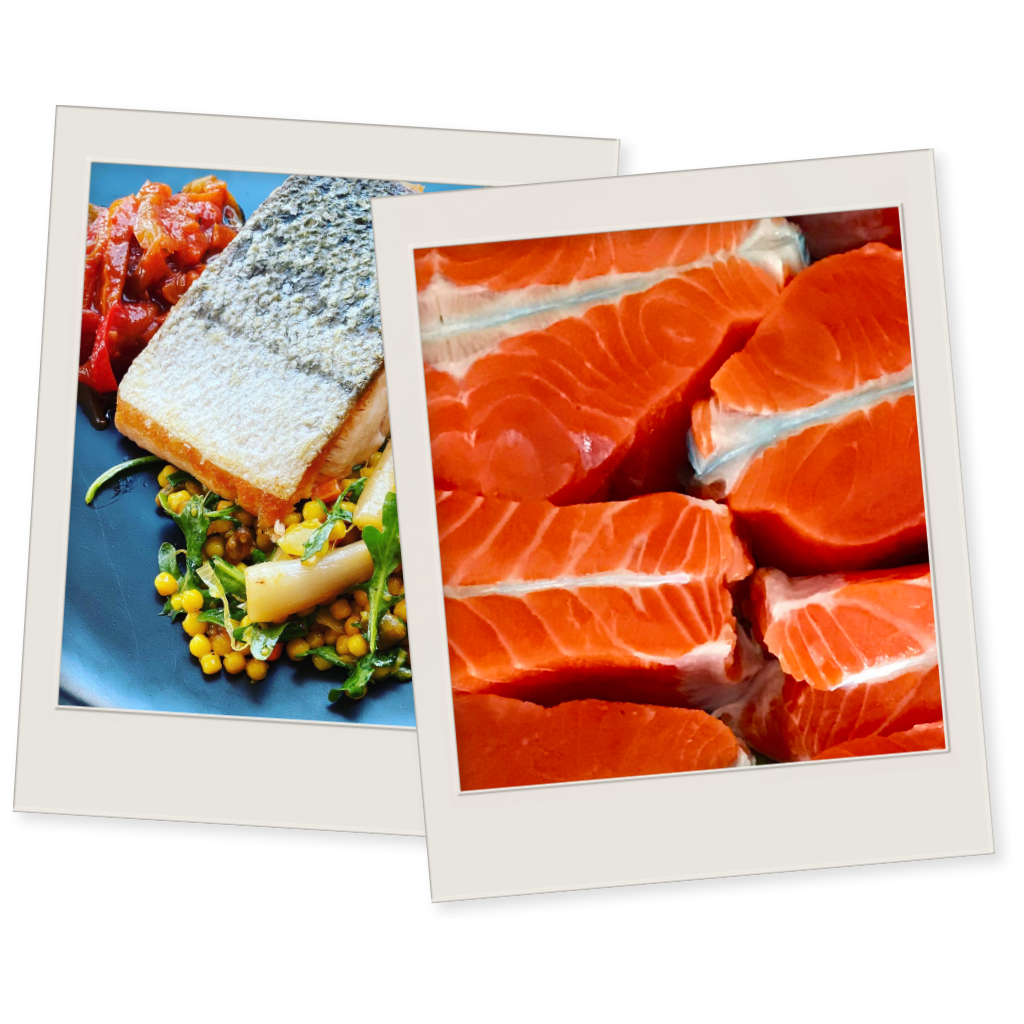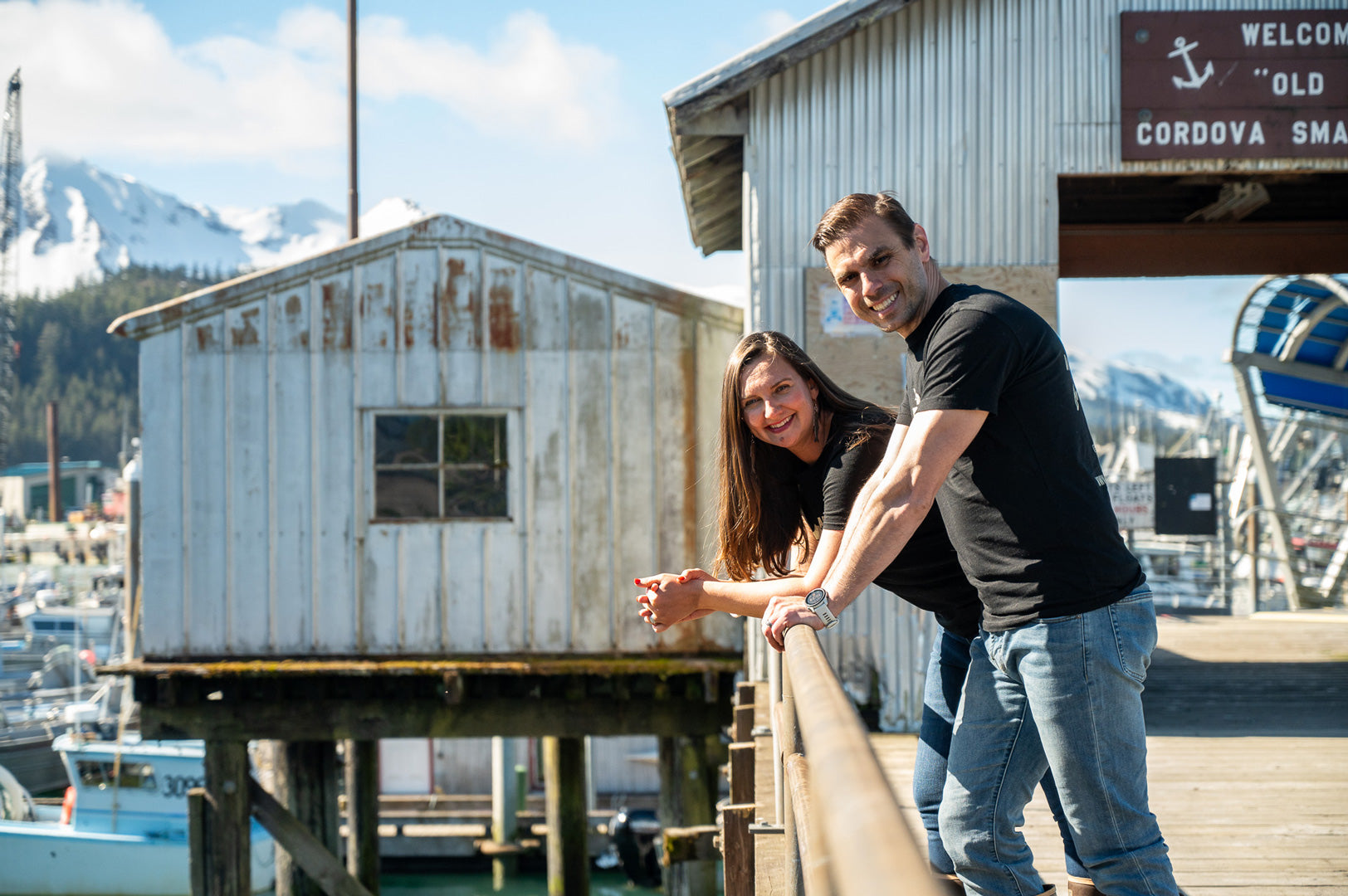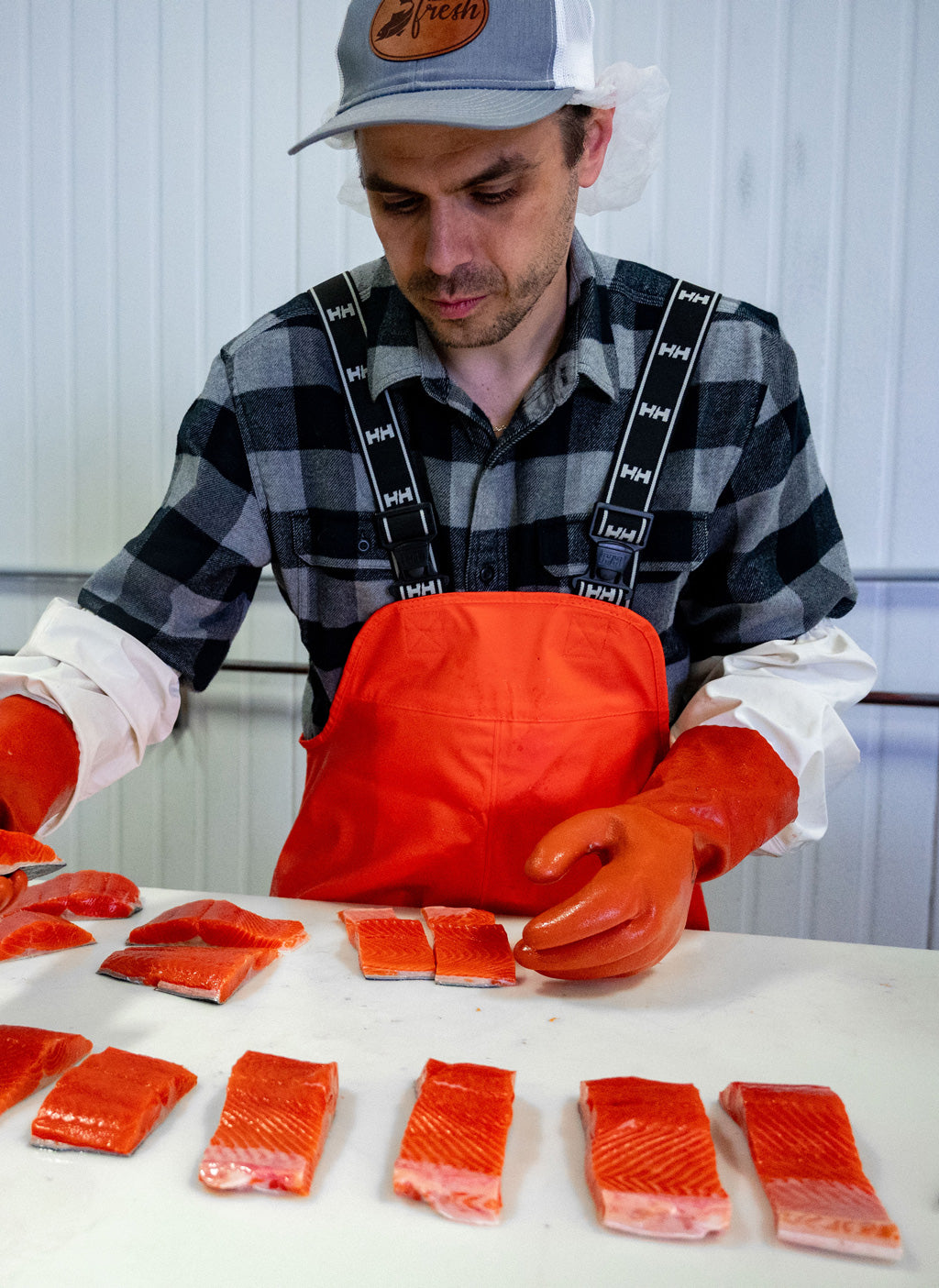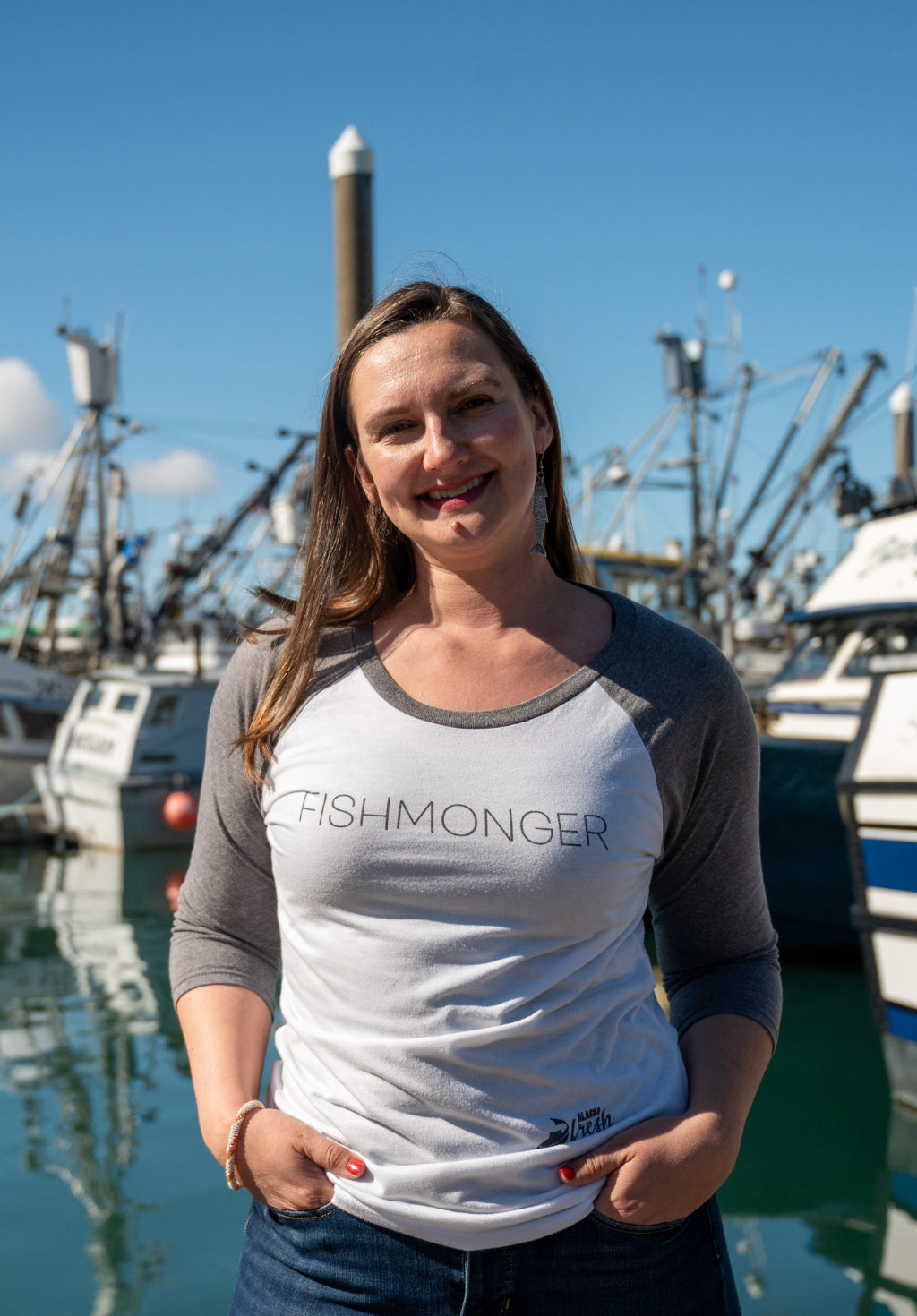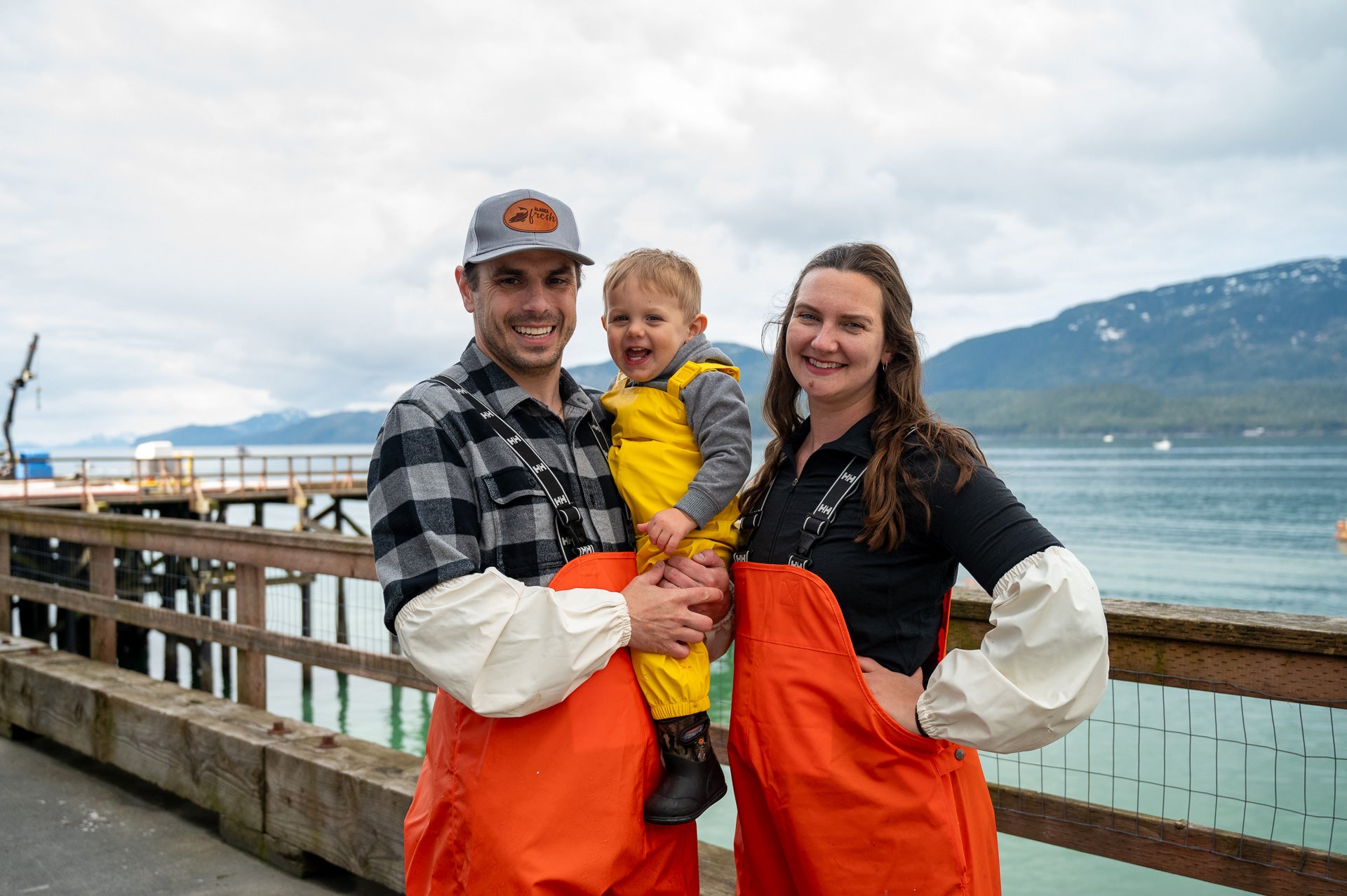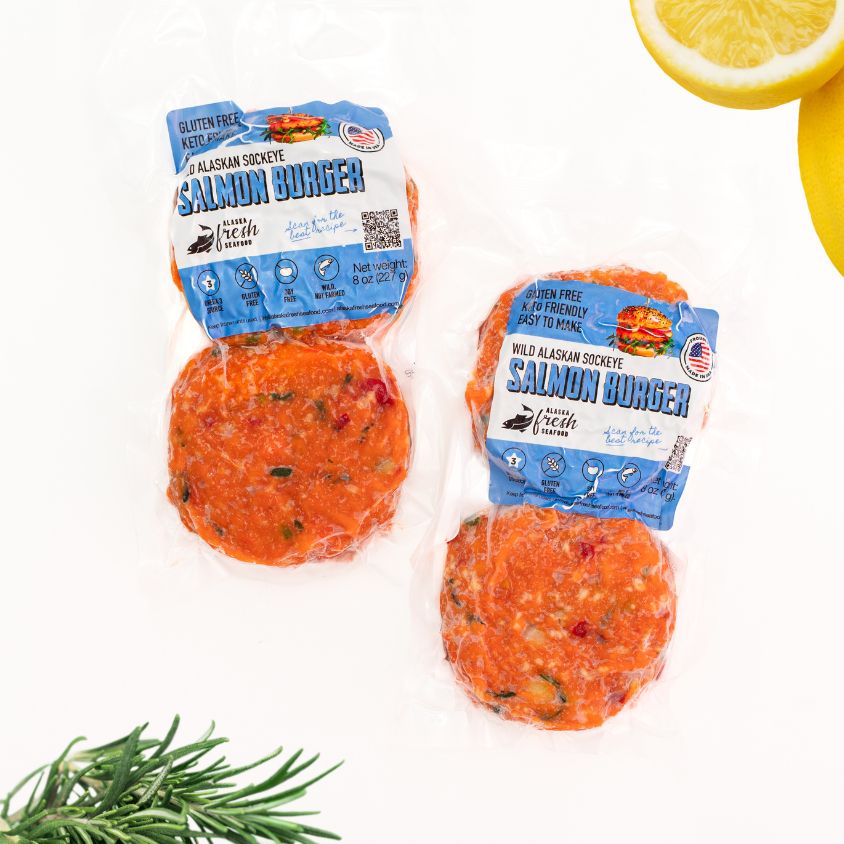
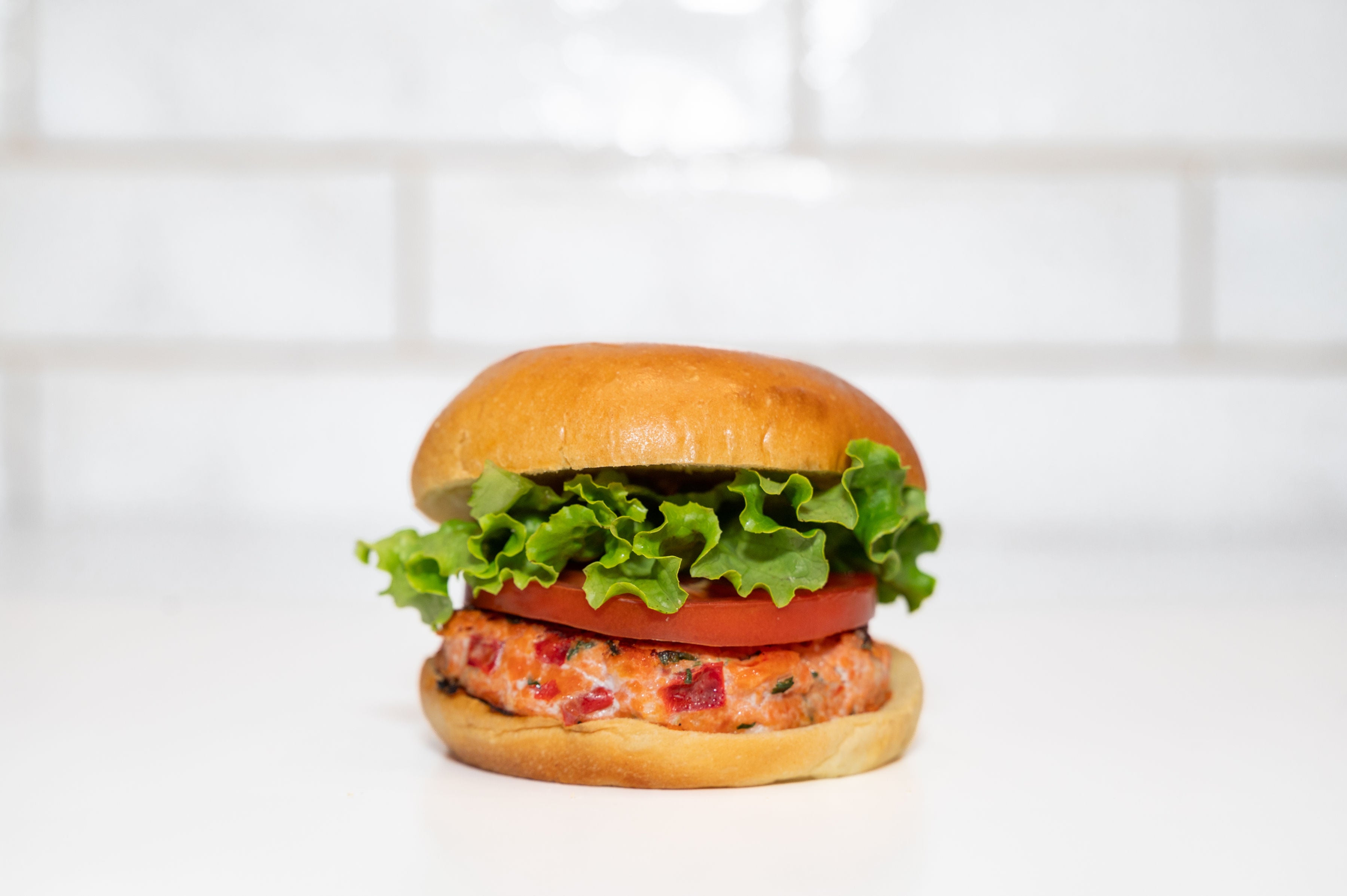
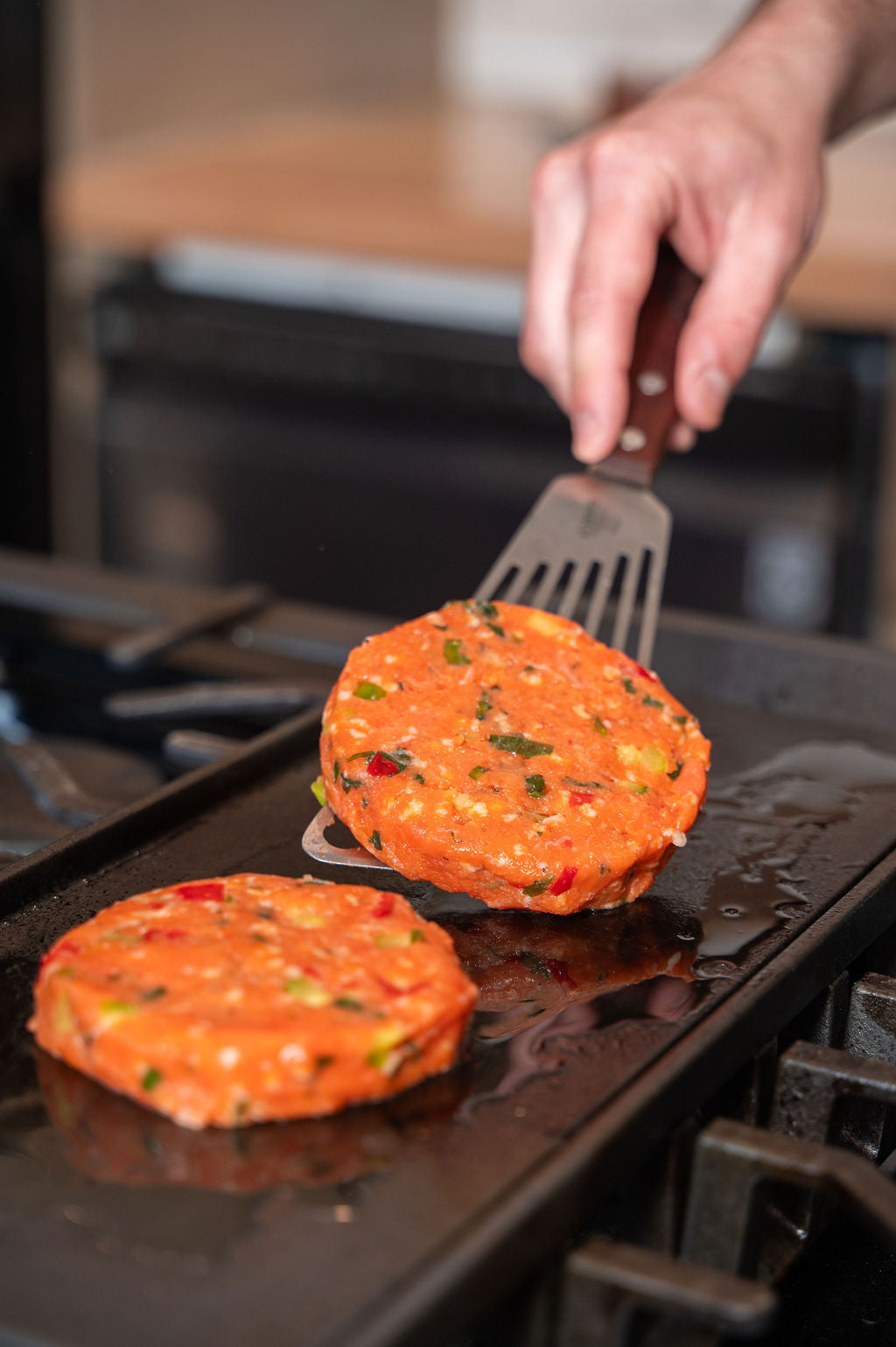

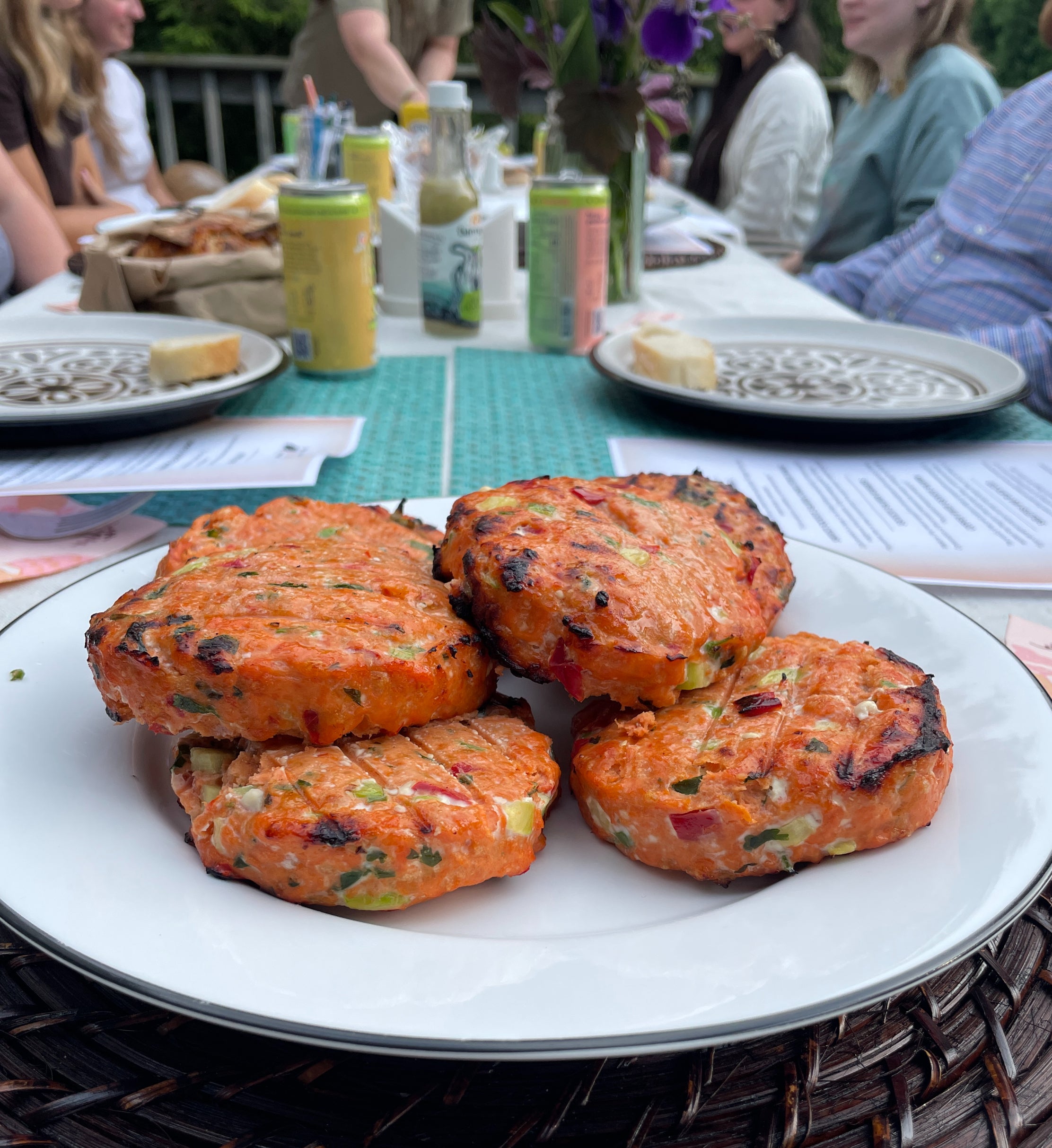
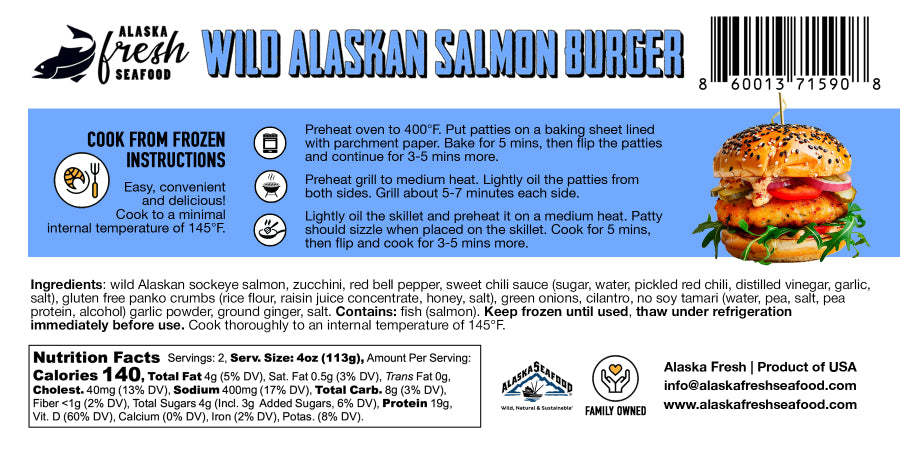
Wild Salmon Burgers - Alaskan Sockeye (8oz)
Legendary quality, ultimate convenience. Our wild-caught Copper River sockeye salmon found in this product is 100% pure Alaska sockeye. Flash-frozen and ready for salmon burgers, tacos, meatballs, or any recipe. No fillers, no farmed fish, no compromise, just bold, omega-3-rich wild Alaska salmon for maximum versatility.
Couldn't load pickup availability
Pickup available at Alaska Fresh Seafood - Butler
Usually ready in 2-4 days
We think you'll love these too...

Wild caught in Alaska

Flash-frozen at peak freshness
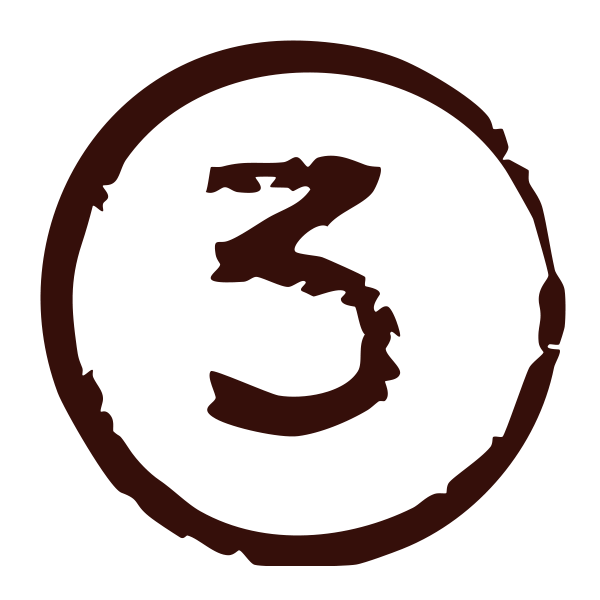
Rich in omega-3s
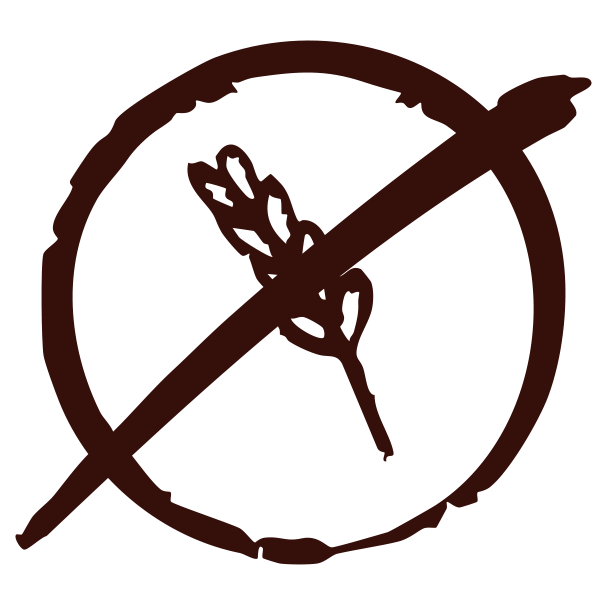
Gluten free, soy free, preservative free
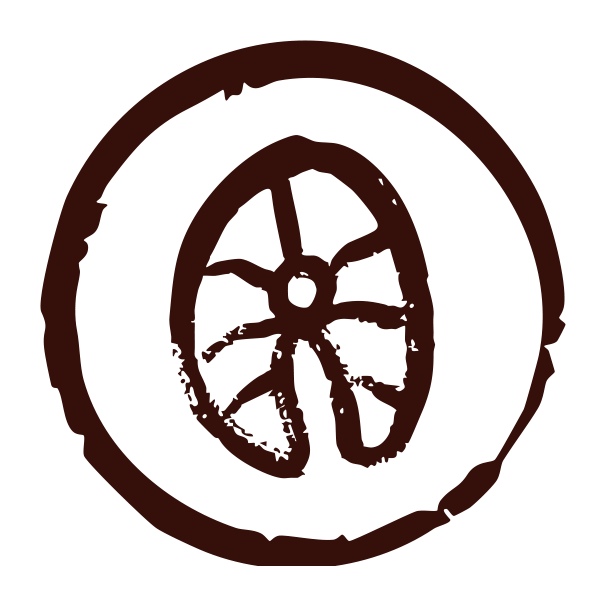
Frozen guarantee
PACKED WITH GOODNESS
Sockeye Salmon Burgers - Wild Alaskan (8oz)
- Made from wild caught Alaskan sockeye salmon
- GMO Free
- Gluten Free
- Soy Free
- Preservative Free
- Rich in Omega-3s
- Product of USA
- Easy to make
- Perfect 4oz patties (2 per pack)
This delicious salmon burger patty recipe is so nice to have on hand for a last-minute healthy meal option. If you ever ask yourself - can I find good salmon burgers near me? - the answer is YES. Order now and get them delivered to your doorstep.
These wild Alaskan salmon burger patties are non-GMO, Gluten free and soy free. In fact the only main allergen is fish, which makes them safe to eat for almost anyone.
Our salmon burgers are very easy to prepare. Just cook them for 3 minutes on each side (grill, pan fry/sear) or 6 minutes total (bake). Cook from frozen for 12 minutes. Slightly increase the cooking time if you like your burgers more well done.
They pair very well with brioche bun, mayo, mustard and lettuce or baby spinach.
What's in our salmon burger
The main ingredient is salmon meat that was hand scraped off the back bone of the best wild Alaskan sockeye salmon. This wild caught salmon has uniquely high content of Omega-3 fatty acids, which gives our burgers not only health and nutritional benefits, but also beautiful color, moist texture and most of all a wonderful taste. You can't go wrong with our wild Alaskan sockeye salmon burgers.
Full ingredients: wild Alaskan sockeye salmon, zucchini, red bell pepper, sweet chili sauce (sugar, water, pickled red chilli, distilled vinegar, garlic salt), gluten-free panko crumbs (rice flour, raisin juice concentrate, honey, salt), green onions, cilantro, no soy tamari (water, pea, salt, pea protein, alcohol), garlic powder, ground ginger, salt.
Contains: wild fish (salmon).
OUR FISH SOURCE
Our wild Alaskan sockeye is caught exclusively by small boat fishermen in Alaska.
The men and women in our fleet are dedicated to the best handling practices, such as bleeding every fish immediately after it comes out of the water, using slushed ice or refrigerated sea water to minimize the pressure on the meat and keeping their fishholds at 32 – 36 degrees Fahrenheit to maximize the shelf life of the product while they transport and deliver their catch to our processor.
SHIPPING INFORMATION
STANDARD SHIPPING:
Your order will ship via UPS the Monday, Tuesday or Wednesday after you place your order. Your fish will arrive Tuesday - Thursday depending on your location. The orders are shipped from our hub in Milwaukee with dry ice for transit. Don’t worry, ALL fish are from Alaska! We do quality control and reduce your shipping cost by shipping from Milwaukee.
EXPEDITED SHIPPING:
If you pick expedited shipping during checkout, your order will be shipped within one business day with overnight delivery. With the exception of our shelf stable products, we are not able to ship on Fridays.
PICK-UP:
You will receive an email when your order is ready with instructions on how to coordinate your pick-up date, time, and place.
FROZEN GUARANTEE
Frozen shipments are shipped with ample dry ice to sustain the shipment duration. Frozen products need to be put in the refrigerator for immediate consumption or in the freezer for future use shortly after delivery. The dry ice is sublimating during the shipping process so your shipment may arrive with no ice left in the box, but it is good and safe to consume as long as it remains frozen.
If your shipment arrives partially thawed on the edges, it is still good and safe to consume. If the frozen products arrive completely thawed out or damaged in any other way, please take pictures and/or videos with as many visual details as possible and contact us for a possible refund or reship.
The Wild Difference You Can See, Taste & Feel
Good For You Naturally
Recommended recipe
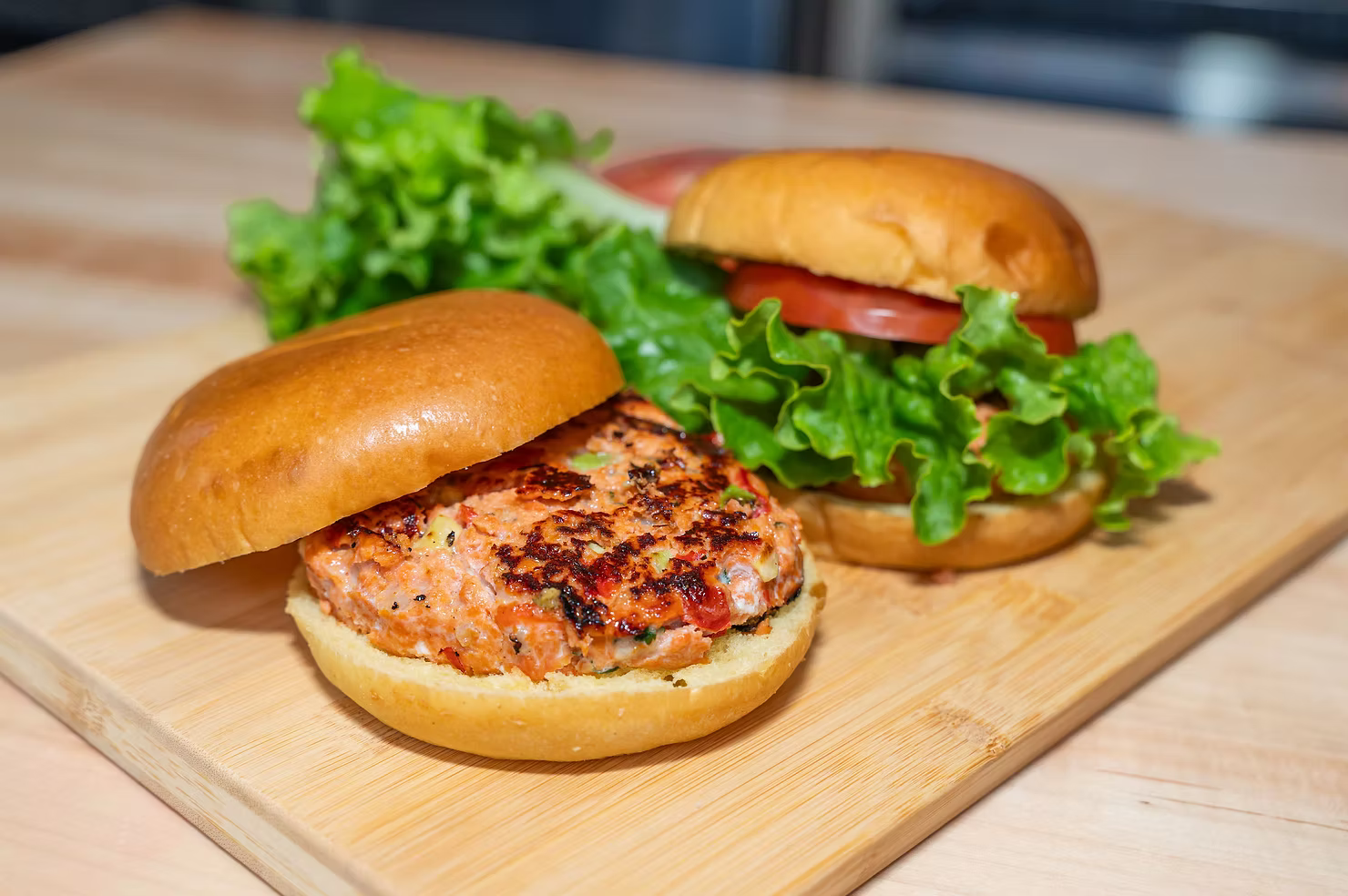
Wild Alaskan Sockeye Salmon Burgers
Salmon burgers are a sustainable alternative to classic red meat burgers, which have an extremely high carbon footprint due to livestock methane emissions.
Ingredients
For the Salmon Burgers:
4 premade salmon burger patties (Asian‐flavored, ~6 oz each)
4 burger buns (brioche or whole‐grain)
4 lettuce leaves (butter or romaine)
1 tomato, sliced
4 slices red onion (optional)
4 pickle slices (optional)
½ cup mayonnaise or Asian-style aioli (for spreading)
1 lemon, cut into wedges (for serving)
For the Frites (French Fries):
2 lbs russet potatoes, scrubbed and cut into ¼-inch sticks
3 cups beef tallow (for frying)
1 tsp sea salt (or to taste)
½ tsp black pepper
¼ tsp garlic powder (optional)
For Assembly & Garnish:
2 cups cooked rice (optional side)
1 tsp toasted sesame seeds (optional)
2 green onions, thinly sliced (optional)
Instructions
- Prep the Potatoes for Frites:
Rinse cut potato sticks under cold water until water runs clear.
Pat dry thoroughly with a clean kitchen towel or paper towels.
Spread in a single layer on a baking sheet; refrigerate (or rest at room temperature) for 15 minutes to remove excess moisture. - Cook the Frites (First Fry):
In a heavy-bottomed pot or deep fryer, heat beef tallow to 300 °F (150 °C). Use a thermometer.
Working in batches, add potato sticks (avoid overcrowding). Fry until they begin to soften and turn pale golden, about 4–5 minutes.
Remove with a slotted spoon; drain on a wire rack or paper towels. Let rest while you cook burgers. - Cook the Premade Salmon Burgers:
Remove frozen or refrigerated salmon patties and follow package instructions:
If frozen: Preheat oven to 400 °F (204 °C). Place patties on a parchment-lined baking sheet. Bake 10–12 minutes until internal temperature reaches 145 °F (63 °C), flipping halfway.
If thawed: Heat a nonstick skillet with 1 Tbsp avocado oil over medium heat. Cook patties 3–4 minutes per side until golden and cooked through (145 °F internal).
Transfer cooked patties to a plate; cover loosely with foil to keep warm. - Finish the Frites (Second Fry):
Increase tallow temperature to 375 °F (190 °C).
Fry par-cooked potatoes in batches until crisp and deep golden, about 2–3 minutes.
Remove with a slotted spoon; drain on paper towels or a wire rack. Immediately season with sea salt, black pepper, and garlic powder (if using). - Assemble the Salmon Burgers:
Lightly toast burger buns if desired.
Spread mayonnaise or Asian-style aioli on the bottom bun.
Place a lettuce leaf, one salmon patty, a tomato slice, red onion slice, and pickle (optional).
Squeeze a lemon wedge over the patty; close with top bun. - Serve:
Arrange each burger on a plate with a generous portion of hot frites.
If desired, sprinkle toasted sesame seeds and sliced green onions over the frites or burgers.
Serve with extra lemon wedges and your choice of dipping sauce (ketchup, aioli, or sriracha mayo).
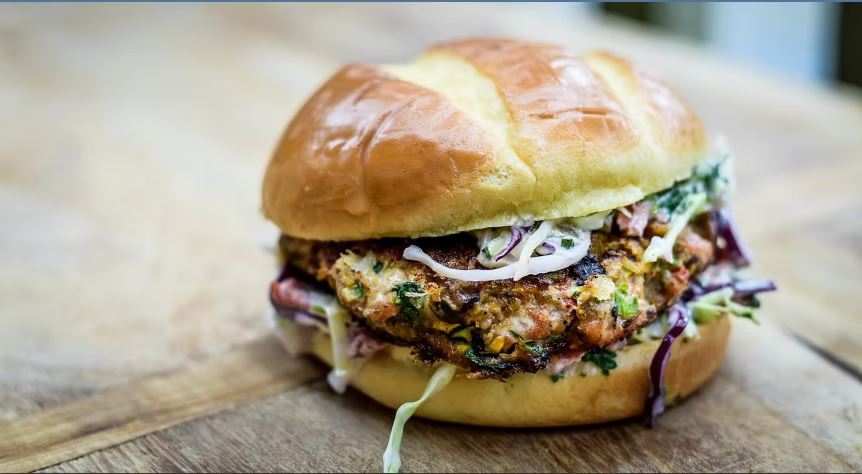
Super Easy Copper River Sockeye Salmon & Black Bean Burger
This culinary delight combines the richness of Copper River Sockeye Salmon with the heartiness of black beans, offering a flavorful blend of omega-3s, protein, and fiber.
Ingredients
1 ½ lbs Minced Copper River Sockeye Salmon
¼ cup green onion chopped
½ cup fresh corn
½ cup zucchini diced fine or grated
½ cup cilantro, chopped
½ cup panko bread crumbs
1 can black beans, rinsed & drained
1 avocado
1 egg
1 tsp cumin
½ tsp coriander
2 tsp chili powder
salt & pepper to taste
juice of ½ lime
olive oil
Directions
- Start by mixing together Minced Copper River Sockeye Salmon, corn, zucchini, cilantro, and half of the black beans in a spacious container with a lid.
- Blend the remaining half of the black beans, half of an avocado, lime juice, using a food processor until smooth.
- Add an egg and your preferred spices to the blended mixture, pulsing until thoroughly combined.
- Combine the processed mixture with the salmon mixture in the container, stirring until evenly mixed.
- Cover the container and let it chill in the refrigerator for about 2 hours.
- Spread breadcrumbs onto a large plate.
- Shape the mixture into patties of your preferred size and coat each patty in breadcrumbs.
- Heat a large pan with a small amount of oil over medium heat.
- Fry the patties for about 4-5 minutes on each side until golden brown and cooked through.
- Turn the patties only once to prevent them from breaking apart.
- Serve the patties as burgers, meatballs, or as a filling for lettuce wraps.
* For an even quicker recipe use Wild Alaskan Sockeye Salmon Burgers
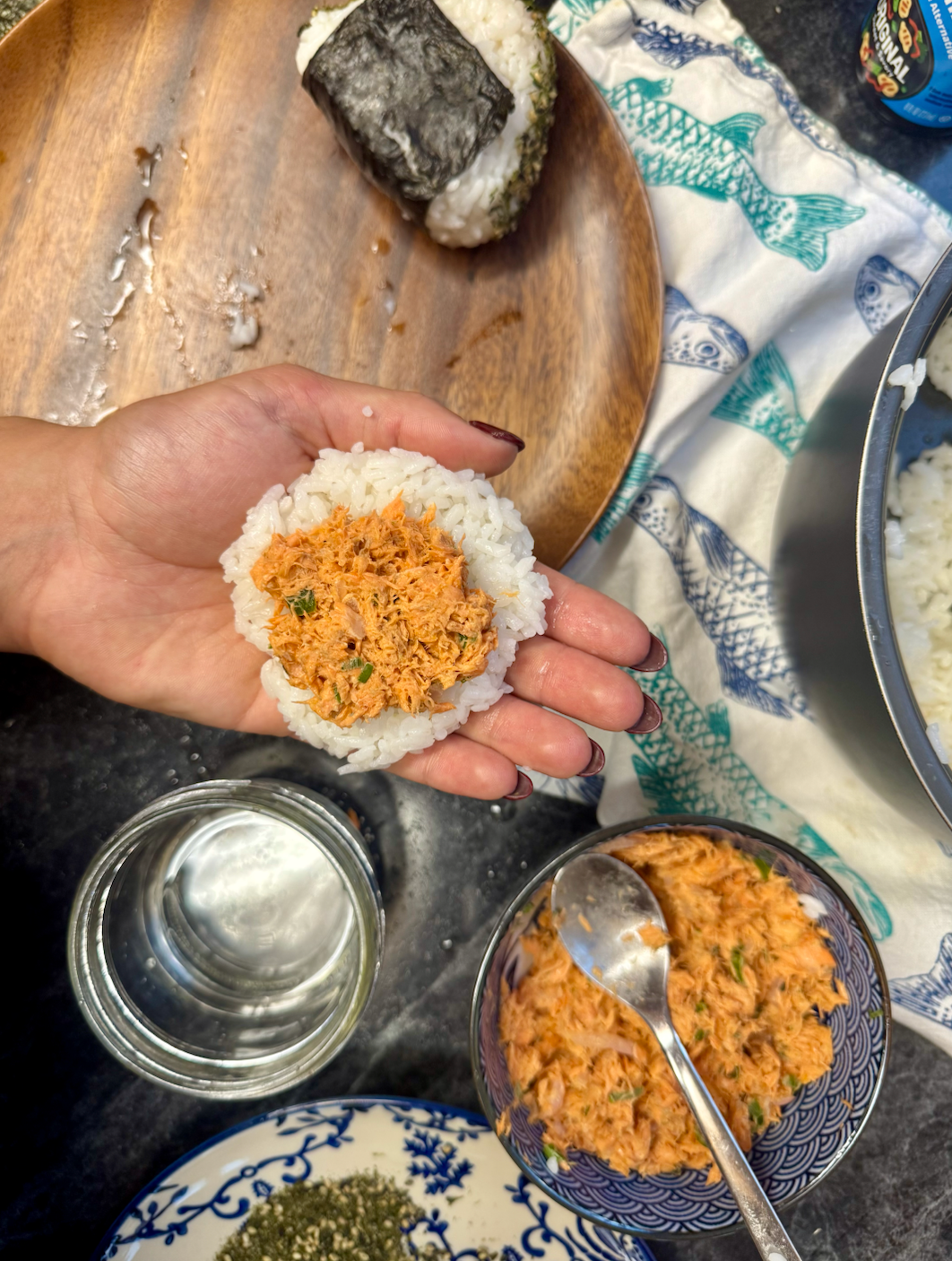
Salmon Onigiri (Rice Balls)
Makes roughly 5 large onigiri.
Ingredients
- 3 Cups cooked short grain rice
- Dash of salt and sugar
- 1 Cup cooked salmon, flaked or minced
- 1 Tbs diced green onion
- 1 Tsp Coconut aminos
- 1 Tbs kewpie mayonnaise
- 2 Tbs pickled red onion or radish, diced
- Furikake seasoning
- 5 sheets nori seaweed
Instructions
- Cook the rice following package instructions. Add a dash of salt and sugar and stir well with a non-stick paddle or spatula while still warm.
- Create the filling by mixing the cooked salmon with the green onion, mayonnaise, coconut aminos, and pickled onion.
- Next, prepare your space by cutting the nori sheets in thirds with scissors. You may want to trim them further depending on the size of your final rice ball. Place a shallow bowl of water nearby for dipping your fingers and spread the furikake seasoning out onto a plate for rolling to coat the final rice ball.
- To assemble, wet your hand and place enough rice inside to cover your palm. Add one spoonful of the salmon filling into the middle. Using the rice paddle add another palm sized amount of rice on top making a "sandwich" in your hand. Before you shape the ball make sure to wet your other hand, this will prevent the rice from sticking to your fingers and making a mess! Slowly squeeze and shape the ball until the rice envelopes the filling. Next, you can shape a triangle with your fingers, or using a square pyrex you can push the ball into shape in the corner. It doesn't have to be perfect, as long as it holds together!
- Once you have shaped the onigiri, rewet your fingers and place a piece of nori seaweed along the base of the onigiri. This helps maintain the structure and adds a nice umami chewiness to the whole bite. Roll as much as you desire in the furikake mix to finish.
ASK YOUR FISHMONGER
What makes Copper River salmon special?
Copper River salmon have to swim 300 miles up the stream of an icy cold Copper River Watershed to get to their spawning grounds. They have to gather enough muscle and fat to survive this tremendous journey. The high fat content gives Copper River salmon its incredible taste, moist texture and a lot of Omega-3 acids, one of the most important nutrients in any fish.
This unique salmon is praised amongst the top chefs for its taste and texture qualities, while home cooks also enjoy the simplicity. Copper River salmon tastes so good that the only other ingredient you need is a little bit of salt.
High quality brings high demand, but whether you look for kings, sockeyes, or cohos, Copper River salmon is hard to get. Knowing its uniqueness and fragile balance in the ecosystem, everyone involved in the Copper River fishery works towards a sustainable future. Fishing season is short with areas and times regulated to guarantee the needed escapement for future populations to thrive year after year.
Fishermen are often considered lucky to be able to participate in the Copper River fishery and they are known to be a poster child of quality fish handling and temperature control.
What's the difference between Copper River sockeye, Copper River king and keta salmon?
Copper River king is known as the best salmon in the world because of its extremely high omega-3 content, buttery flavor and velvety texture. The fishing season for this special fish is short and extremely regulated so only a very limited amount is available each year.
Copper River sockeye is known for its intense salmon-forward flavor, high level of omega-3s and beautiful bright red color. It lives in the same ecosystem as the Copper River king salmon, and while it doesn’t get as “fat” as the king, it has more omega-3s than wild sockeyes from other fishing areas. It is also very high in an antioxidant astaxanthin, which is 6000 more powerful in neutralizing harmful free radicals than vitamin C.
Our keta salmon is harvested in the Prince William Sound area. It doesn’t offer the fat content of the king or bright color of the sockeye, but it’s still a very good source of omega-3s, nutrients and healthy protein. Its mild flavor makes it an ideal choice for marinating or cooking with flavorful sauces and spices. It’s also our most affordable wild salmon species.
When is Copper River salmon season? Is this from this year's catch?
Copper River king salmon has the shortest fishing season, usually from mid to late May until late June, early July. Copper River sockeyes can be caught from mid May until late July and cohos usually run from early August until late September.
Why is Copper River sockeye salmon more expensive than regular sockeye?
Copper River sockeye salmon is more expensive than regular sockeye because of where and how it’s harvested, and how it’s handled. Think of it as the “wagyu beef” of salmon. Copper River sockeye (same as Copper River coho and king) are specifically from the Copper River fishing district, in South Central Alaska, full of pristine, glacial-fed waters. The salmon swim free range for 3-7 years in the Pacific ocean to build up fat and muscle for their 300 mile journey against the strong and cold river current back to their spawning grounds in the Chugach mountains.
The fish are harvested by one person, on a small boat, each one picked from the net, by hand. There are no mass fishing boats allowed in the district. The fishery is a poster child for quality and sustainability, unlike many fisheries around the globe where fish stocks are drained.
The fishing fleet is less than 500 boats, all of which undergo specific training and protocols for how to properly handle each fish after catch with particular bleeding and slush-ice storage methods.
Fishing for Copper River salmon is an art form. The technique has not changed much over centuries, which is becoming more and more rare as working waterfronts collapse due to mismanagement - something you do not need to worry about when sourcing from the Copper River.
Is sockeye salmon very 'fishy' tasting?
Our Copper River sockeye is definitely not fishy tasting, which is why it is so coveted by salmon eaters. Sockeye should have a fresh, salmon-forward taste. The “fishy” taste comes from lack of freshness but because our fish is flash-frozen at peak freshness, it tastes like fresh out of the ocean. Once you have Copper River sockeye, it’s really hard to go back to any other salmon. If you have fishy tasting sockeye, it’s probably not very fresh or it was sitting in the deli case for a little too long.
How big are the portion sizes?
Each frozen portion is generally 6 oz. Depending on how hungry you are, you can get 1-2 servings per portion. Our whole sides of salmon are around 1.5 lbs. each.
Our minced salmon and halibut cheeks and chop are 1-pound packages. Our smoked salmon is 4 oz or 6.5 oz. Check each product for exact weight details. Depending on how hungry you are, you can get 1-2 servings per portion.
Why is the fish frozen? That's not how it looks in the grocery store case.
Flash freezing fish right after catch is the only way to preserve its quality. Fish in general have very short shelf life. They start to spoil right out of the water. Bringing fish from Alaska to the Lower 48 without freezing can negatively affect the appearance, structure and taste.
It's a seasonal fish so you need to stock up in the summer to enjoy it year-round. Beware the thawed piece of wild Alaskan fish for sale! As your butcher if it was previously frozen and how long it’s been thawed.
Flash frozen is actually the freshest way to go!
Who do I support when I buy your fish?
Small boat fishermen in south Central Alaska, our processors in Cordova and Anchorage and our family in Menomonee Falls, Wisconsin.
When will I get my order?
Your fish will be shipped the Monday or Tuesday after your order is placed. You will receive your fish 1-2 days after shipping. We ship out of our hub in Milwaukee. Don’t worry, all of your fish is from Alaska! Adra’s originally from WI.
We relocated back here and started our company. And shipping from MKE versus Alaska saves you $$ on shipping as the customer! If you’ve purchased a 'preorder' product then the delivery date is in the product description.
Meet your Fishmongers
With 17+ years living in Cordova, Alaska, owners Adra and Juro built relationships directly with local fishermen and ran seafood processing operations, giving us the inside perspective most seafood companies simply don't have.
We hand-pick each fish from trusted boats, then partner with elite processor Copper River Seafoods (where Juro worked for 13 years) to ensure every fillet is perfectly cut, flash-frozen within hours, and vacuum-sealed to lock in peak freshness for up to two years.
While there's a myth that "never frozen" is best, the truth is unless you live on the Alaska coast, our flash-frozen fillets will taste fresher than anything that's been shipped fresh for days. We guarantee that our proven boat-to-box process delivers the quality consistency you deserve, with the personal expertise you can trust.

